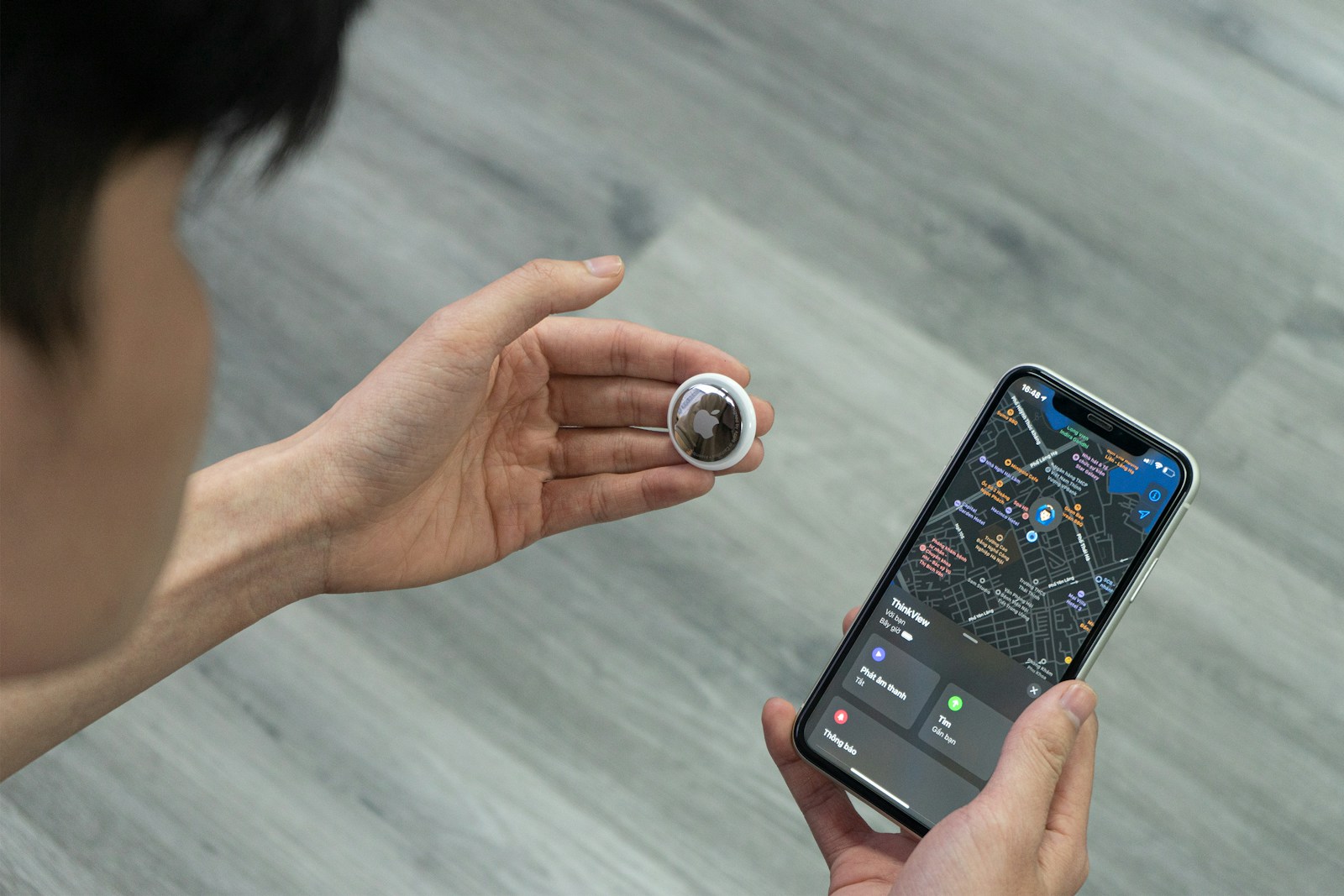AirTags are small devices designed by Apple to help people keep track of their belongings. They work with the Find My app to locate items they’re attached to, like keys or bags. While AirTags do not offer geofencing—a feature that triggers an alert when an item enters or leaves a predefined geographic area—they do have a useful feature known as Notify When Left Behind. This feature alerts users if they move away from their item, helping to prevent loss. Think of it more as a Proximity Alert than a Geofence.
Notify When Left Behind can be activated through the Find My app on an iOS device. Once turned on, it notifies the user if they leave their AirTag-equipped item in an unfamiliar location. Adding safe locations, like a home or office, prevents the AirTag from sending alerts when the item is left in these trusted places. This functionality helps users stay aware of their belongings without the need for a geofence.
Maximizing AirTag Features: A Geofencing Alternative
Do AirTags Have Geofencing?
While AirTags don’t have built-in geofencing, you can create a virtual boundary using the “Notify When Left Behind” feature in the Find My app. This allows you to set specific locations where your AirTag can be without triggering an alert.
How to Set Up AirTag “Geofencing”
- Open the Find My app on your iPhone.
- Tap on the “Items” tab.
- Select the AirTag you want to set a geofence for.
- Scroll down and tap “Notify When Left Behind.”
- Toggle on the switch and choose “At This Location.”
- You can adjust the geofence size by tapping “New Location” and selecting “Small,” “Medium,” or “Large.”
Customizing Your Geofence
| Setting | Description |
|---|---|
| Notify When Left Behind | Enables or disables notifications for the AirTag. |
| At This Location | Sets the specific location where you don’t want to be notified if you leave your AirTag. |
| Notify with Sound | Choose whether you want a sound alert when leaving your AirTag behind. |
| Notifications | Customize notification settings for the AirTag. |
Limitations and Considerations
- Requires iPhone: Geofencing relies on your iPhone’s location services, so it won’t work if you don’t have an iPhone with you.
- Not True Geofencing: This feature is more of a proximity alert than a true geofence, as it only works when your iPhone leaves the designated area.
- Battery Life: Using the “Notify When Left Behind” feature can impact the AirTag’s battery life.
While not a perfect solution, utilizing the “Notify When Left Behind” feature can create a pseudo-geofence for your AirTags, offering additional flexibility and control over your tracking experience.
Key Takeaways
- AirTags help track items but don’t have geofencing.
- Notify When Left Behind sends alerts when items are forgotten.
- Trusted locations can be set to avoid unnecessary alerts.
Understanding Airtags and Their Capabilities
Apple’s AirTag is a small tracking device that works together with the Find My network. This section explores what AirTags are, their main features, and a key limitation.
What is an Airtag?
An AirTag is a small, circular device designed by Apple to help people locate their personal items. Users attach it to items like keys, wallets, or bags, and it syncs with the Find My app on an Apple device.
Key Features of Airtags
Find My Network: AirTags use Apple’s Find My network, which includes millions of iPhones, iPads, and Macs worldwide. When an item with an AirTag is lost, it sends out a secure Bluetooth signal that can be detected by nearby devices in the network, helping users track it down.
Precision Finding: For those with an iPhone 11 or later, the Precision Finding feature uses ultra-wideband technology to guide them to their AirTag with on-screen directions.
Privacy-Focused: AirTags are designed with privacy in mind. Location data is encrypted, and no location history gets stored on the AirTag itself.
Simple Setup: By just bringing the AirTag close to an iPhone, it instantly pairs with the device, much like how AirPods connect.
Limitations of Airtags: No Geofencing
While AirTags are useful for locating items, they do not support geofencing—a feature that notifies users when they move out of a specific area. However, AirTags do offer a feature called “Notify When Left Behind.” This alerts users when they separate from their AirTag beyond a certain distance, which helps prevent items from getting lost.
FAQs
How to hide an AirTag on a bike?
There are several discreet places to hide an AirTag on a bike, such as under the seat, inside the handlebars, or within a water bottle cage. Make sure it’s securely attached and won’t interfere with the bike’s operation.
How to replace An AirTag battery
To replace the battery in your AirTag:
- Press down on the stainless steel battery cover and rotate it counterclockwise until it stops.
- Remove the cover and the battery.
- Insert a new CR2032 battery with the positive side facing up.
- Replace the cover and rotate it clockwise until it clicks into place.
I found an AirTag How do I find the Owner?
If you find an AirTag that doesn’t belong to you, you can use an NFC-capable device to scan it. This will reveal the owner’s contact information if they’ve marked it as lost. If you’re concerned about someone tracking you, you can also disable the AirTag by following the instructions provided on your device.
I got an AirTag alert on my phone
An AirTag alert on your phone usually means an unknown AirTag is moving with you. This is a safety feature to prevent unwanted tracking. Follow the instructions on your phone to locate and disable the AirTag.
Is it illegal to put an AirTag on someone?
Yes, it’s illegal to use an AirTag to track someone without their knowledge or consent. This is considered stalking and can result in criminal charges.
It’s important to respect people’s privacy and obtain their consent before tracking their belongings or movements with an AirTag. Using an AirTag to track someone without their knowledge is a serious breach of trust and could have legal consequences.
Where Can You Share AirTag with spouse
You can share the location of your AirTag with your spouse through Family Sharing. This allows them to see its location in the Find My app.
Someone stole my AirTag
If your AirTag is stolen, you can mark it as lost in the Find My app. This will enable Lost Mode, which allows you to display a message and contact information on the AirTag if someone finds it. You can also track its location if it comes online.
Where Is The Best Spot To put an AirTag
AirTags can be attached to various items, such as keys, wallets, bags, or even pets. Choose a location where the AirTag is securely attached and won’t be easily lost or damaged.







